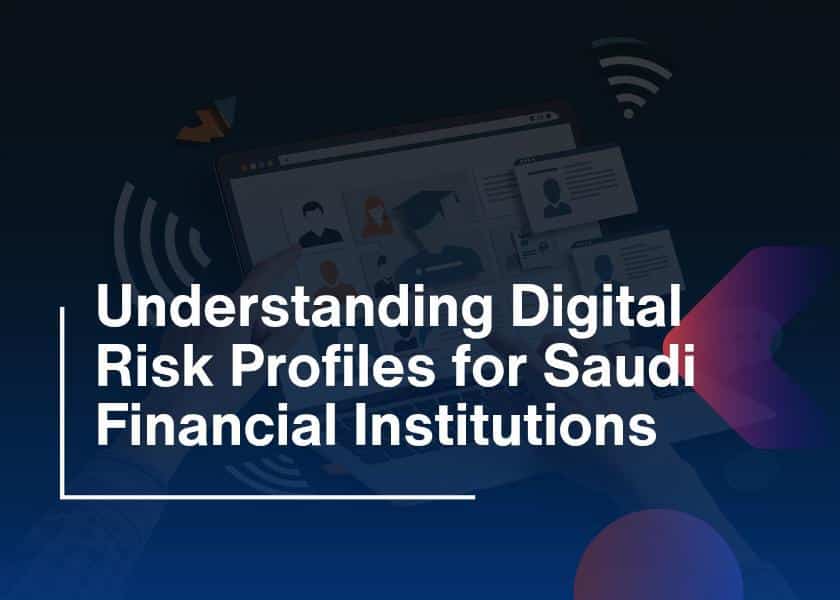In the ever-changing landscape of cybersecurity, where threats are evolving at an unprecedented pace, the concept of proactive risk management takes center stage. This blog post navigates the realm of proactive risk management in a Security Operations Center (SOC), exploring its definition, the proactive elements in risk management, examples of proactive security measures, the significance of a proactive risk management process, and the strategic risk management approach tailored for the security domain.
What is Proactive Risk Management?
At its core, proactive risk management in a Security Operations Center involves a forward-thinking and strategic approach to identifying, assessing, and mitigating potential risks before they materialize. Rather than merely reacting to threats as they emerge, proactive risk management seeks to anticipate and prepare for potential challenges, fortifying an organization’s security posture.
Key Components of Proactive Risk Management
Continuous Threat Monitoring
Definition
Continuous monitoring involves implementing cutting-edge tools and technologies that facilitate real-time monitoring of network activities, system logs, and user behaviors.
Expansion
This component is crucial for staying ahead of emerging cyber threats. By actively seeking potential vulnerabilities and weaknesses, organizations can take preemptive measures to address them before they are exploited.
Scenario-Based Planning
Definition
Scenario-based planning entails creating hypothetical scenarios to simulate potential security incidents and planning effective responses.
Expansion
Through tabletop exercises and simulations, the SOC team can rehearse and refine their response strategies. This proactive approach ensures readiness for a variety of threat scenarios.
Adaptive Security Measures
Definition
Adaptive security measures involve implementing security measures that adapt dynamically to evolving threats, often leveraging machine learning and artificial intelligence.
Expansion
The proactive use of adaptive measures ensures that security defenses remain effective against the changing tactics and methodologies employed by cyber adversaries.
Incident Response Planning
Definition
Incident response planning involves developing and regularly updating plans to ensure a swift and coordinated response to security incidents.
Expansion
Through regular drills and simulations, organizations can validate the effectiveness of their incident response plans. This proactive preparation is crucial for minimizing the impact of security incidents.
What is Proactive in Risk Management?
Being proactive in risk management means taking deliberate and strategic actions to identify and mitigate risks before they escalate into security incidents. This involves anticipating potential threats, understanding vulnerabilities, and implementing measures to prevent or minimize the impact of adverse events.
Proactive Elements in Risk Management
Risk Identification and Assessment
Definition
Integrating threat intelligence into risk management processes to stay informed about current and emerging cyber threats.
Expansion
By analyzing threat intelligence data, organizations proactively enhance their understanding of the risk landscape. This informed approach contributes to better decision-making in risk mitigation.
Security Awareness Training
Definition
Proactively educating employees and stakeholders about security best practices and potential risks.
Expansion
Regular security awareness programs create a proactive culture within the organization. Educated personnel are more likely to identify and report potential risks, contributing to a vigilant security environment.
Continuous Improvement
Definition
Iteratively improving risk management processes based on lessons learned from security incidents and proactive measures.
Expansion
Proactive risk management involves an ongoing commitment to learning and adapting. By embracing a culture of continuous improvement, organizations can stay ahead of emerging risks.
Examples of Proactive Security Measures
Proactive security measures are designed to prevent or mitigate security risks before they result in actual harm. Here are examples of proactive security measures commonly employed in a SOC environment:
Patch Management
Definition
Regularly applying security patches and updates to software and systems to address known vulnerabilities.
Expansion
Proactive patch management ensures that systems are fortified against known vulnerabilities, reducing the risk of exploitation.
Endpoint Protection
Definition
Deploying advanced endpoint protection solutions to detect and prevent malware infections before they can compromise systems.
Expansion
Proactive endpoint protection involves implementing robust defenses at the endpoints, preventing the entry and execution of malicious code.
User Authentication and Access Controls
Definition
Implementing strong user authentication mechanisms and access controls to prevent unauthorized access to sensitive data.
Expansion
Proactive user authentication ensures that only authorized individuals have access to critical systems and information, minimizing the risk of unauthorized access.
Network Segmentation
Definition
Segregating networks to contain and limit the impact of potential security breaches.
Expansion
Proactive network segmentation involves dividing the network into segments to prevent lateral movement by attackers, restricting their ability to move freely within the network.
Security Awareness Programs
Definition
Conducting ongoing security awareness programs to educate employees about phishing threats and social engineering tactics.
Expansion
Proactive security awareness programs empower employees to recognize and avoid potential threats, reducing the likelihood of falling victim to social engineering attacks.
Why Do We Need a Proactive Risk Management Process?
A proactive risk management process is essential for several compelling reasons:
Early Threat Detection
Explanation
Proactive risk management allows for the early detection of potential threats before they escalate into security incidents.
Importance
Early detection enables organizations to take preemptive action, preventing or minimizing the impact of security incidents.
Minimized Impact
Explanation
By identifying and mitigating risks in advance, organizations can minimize the potential impact of security incidents on their operations and reputation.
Importance
Minimizing impact is crucial for maintaining business continuity and preserving the trust of stakeholders.
Resource Optimization
Explanation
Proactive risk management enables organizations to allocate resources more efficiently by focusing on preventing high-impact risks.
Importance
Efficient resource allocation ensures that limited resources are directed toward addressing the most critical risks, optimizing the overall security posture.
Strategic Planning
Explanation
Anticipating risks enables organizations to develop strategic plans and responses, ensuring a more coordinated and effective approach to security incidents.
Importance
Strategic planning allows organizations to respond in a measured and effective manner, reducing the likelihood of operational disruptions.
Adaptability to Change
Explanation
Proactive risk management fosters an adaptive and resilient security posture, allowing organizations to respond effectively to changes in the threat landscape.
Importance
In a rapidly evolving threat landscape, adaptability is key to maintaining a strong and effective security posture.
Risk Management Approach for Security
In the context of security, the risk management approach involves a systematic and strategic process tailored to the unique challenges of the cybersecurity domain:
Asset Valuation
Explanation
Identifying and assigning value to critical assets, including data, systems, and infrastructure components.
Significance
Asset valuation informs the prioritization of risk mitigation efforts, ensuring that resources are allocated based on the value and criticality of each asset.
Threat Assessment
Explanation
Evaluating potential threats to the organization’s assets, considering the evolving threat landscape and industry-specific risks.
Significance
Threat assessment provides a foundation for understanding the risk landscape, guiding subsequent risk identification and mitigation efforts.
Vulnerability Analysis
Explanation
Assessing vulnerabilities associated with assets and systems, considering factors such as software vulnerabilities, configuration weaknesses, and human factors.
Significance
Vulnerability analysis helps identify potential points of exploitation, guiding the development of targeted mitigation strategies.
Risk Mitigation Planning
Explanation
Developing and implementing risk mitigation strategies, which may include technical controls, policy enhancements, and awareness programs.
Significance
Risk mitigation planning is the proactive step of developing strategies to address identified risks, reducing the overall risk exposure of the organization.
Continuous Monitoring and Review
Explanation
Establishing continuous monitoring mechanisms to track changes in the risk landscape and adapting risk mitigation strategies accordingly.
Significance
Continuous monitoring ensures that the risk management approach remains aligned with the evolving security landscape, enabling organizations to adapt to emerging threats.
Regularly reviewing and updating the risk management approach
This ensures that it remains relevant and effective in the face of evolving threats and organizational changes.
In conclusion, proactive risk management is a strategic imperative for organizations operating in the cybersecurity realm. By actively identifying, assessing, and mitigating potential risks, a SOC can bolster its defenses, minimize the impact of security incidents, and maintain a resilient security posture in the face of evolving cyber threats. Embracing a proactive risk management approach is not just a security measure; it’s a strategic commitment to safeguarding digital assets and ensuring the ongoing security and integrity of an organization’s operations.





